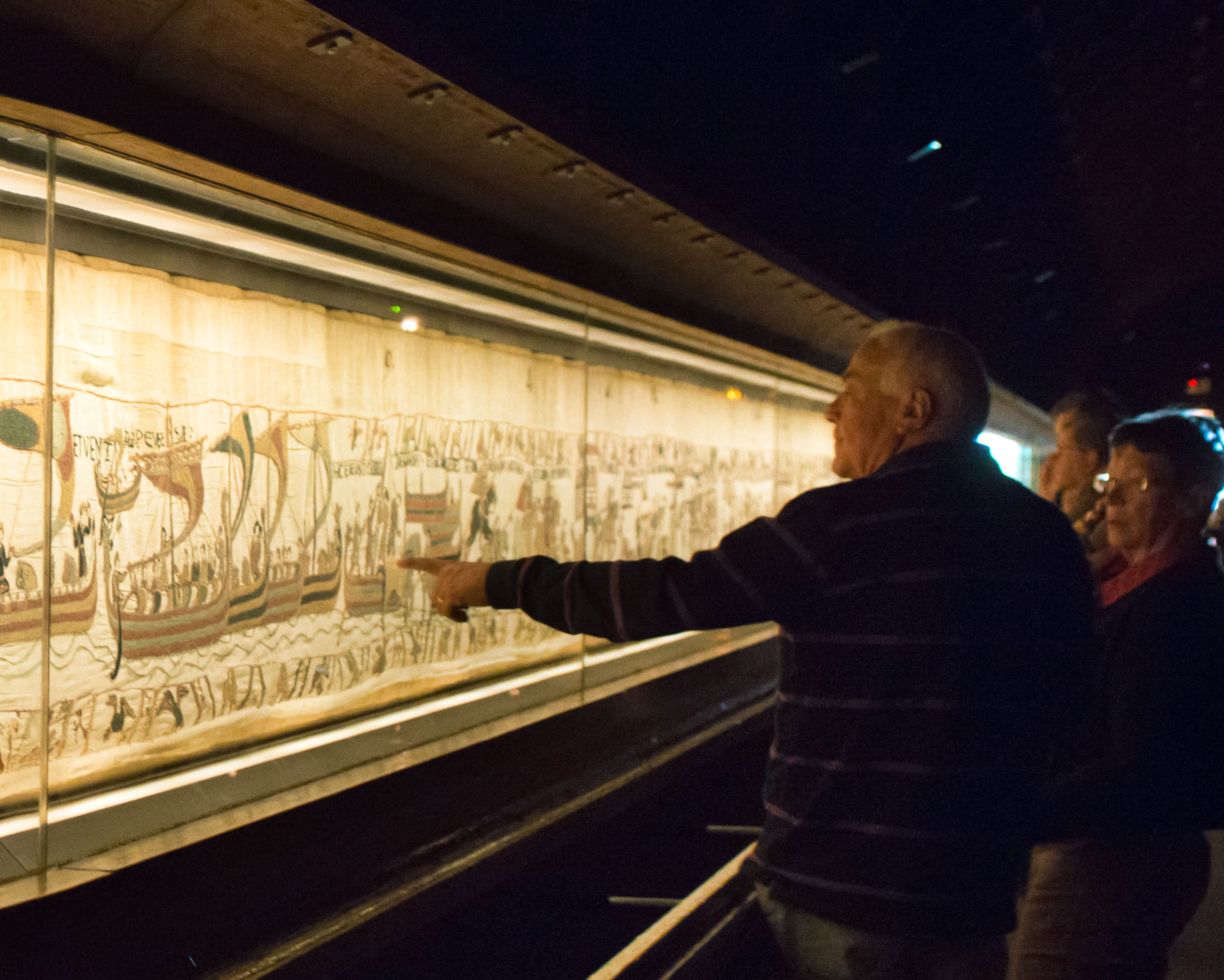
Tourists admiring the Bayeux tapestry in its display case. Photograph by Martin Bennett
It’s astonishing—over 40,000 people have signed a petition to block the French government from lending the Bayeux Tapestry to Britain. Yes, that’s right: a concerned multitude insists the ancient fabric is too fragile for the journey.
The campaign was spearheaded by Didier Rykner, the art historian behind La Tribune de l’Art, who argues that President Macron should have heeded the advice of conservators and restorers instead of green-lighting the loan to the British Museum. It’s destined for London in September 2026 as part of a major show.
The Bayeux Tapestry—more accurately an embroidered cloth nearly 70 meters long, crafted in the 11th century—stands as one of the most vivid chronicles of the Norman conquest of England and the Battle of Hastings in 1066.
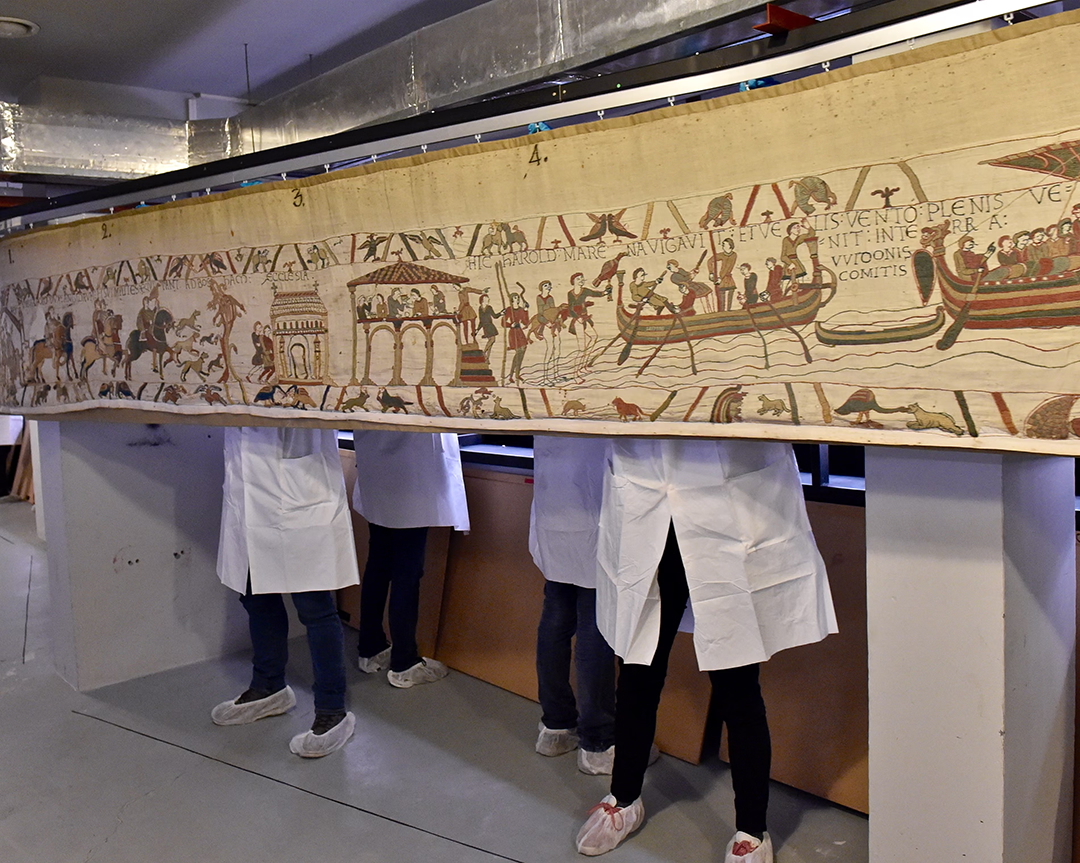
Workers moving the tapestry in the Bayeux Museum. Photograph by Bayeaux Museum
Macron first floated the idea in 2018—yes, that long ago—and now, with the move looming, France’s cultural gatekeepers are clamoring to air their doubts across every platform they can find. At that time, several experts warned that the piece—again, a cloth, not a true woven tapestry—was too fragile to travel. Antoine Verney, then the chief curator in Bayeux, insisted it was in such poor condition that transporting it was nearly inconceivable. And in 2020, inspections documented approximately 24,200 stains and 10,000 holes.
Still, with the presidential administration leaning in, the museum quietly shifted stance, claiming that newer studies show the piece can be moved—if done under hyper-strict conditions. Meanwhile, a portion of the uproar feverishly tries to persuade the Bayeux Museum—designed precisely for the tapestry—to reverse course.
What’s Macron getting out of all this?
I’m not quite sure. Rumor has it that the British Museum—where the embroidery, yes embroidery, will be displayed—will “support and nurture” Bayeux’s new museum project. France’s Culture Minister, Rachida Dati, sweetened the deal early this year with €13 million for museum funding and €2 million for restoration, with the promise of the tapestry’s return in 2027.
But is there something else at play?
Right-wing voices have rallied behind Rykner’s campaign—though in practice, attacking Macron and opposing the loan seem to amount to the same thing. The Patriotas party, under ex-deputy Marine Le Pen lieutenant Florian Philippot, staged weekend protests this summer in Bayeux. When pressed, they respond: “Beyond politics, we’re Normans first and foremost. The president is threatening a French treasure.” Which experts, by the way, have yet to receive a dime from subsidy funds.
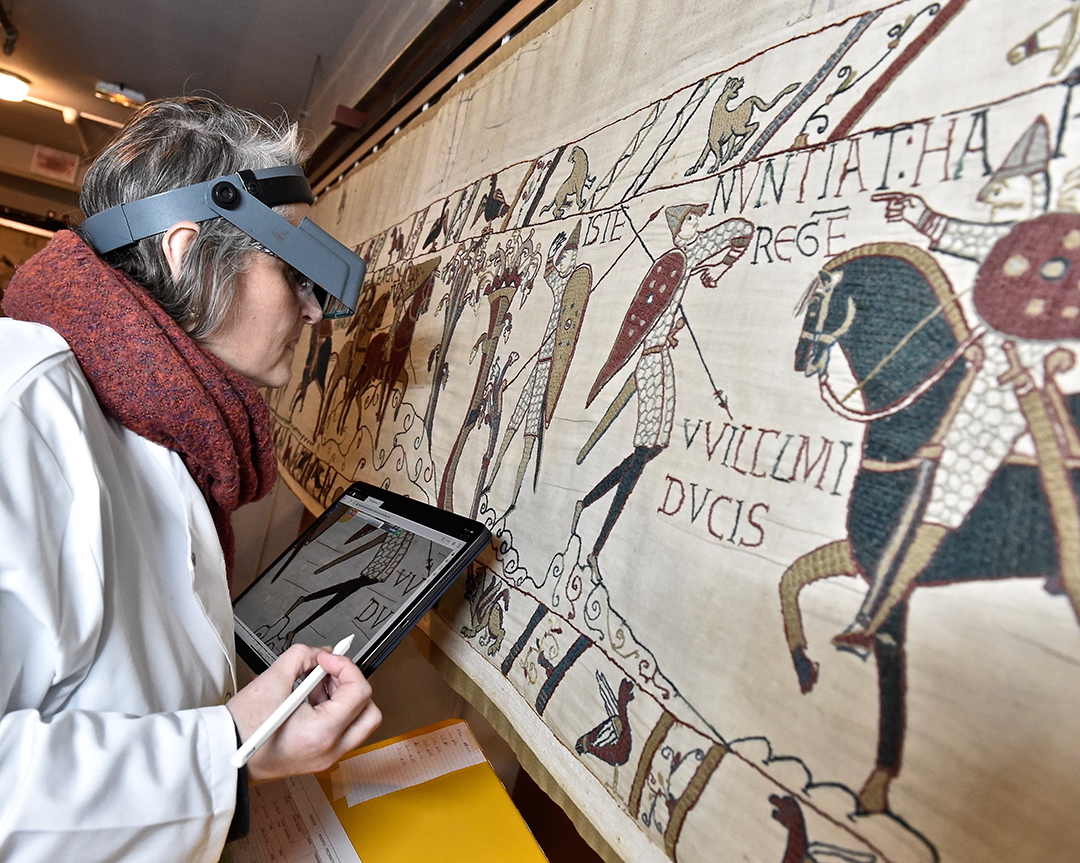
A technician inspecting the tapestry in 2020. Photograph by Bayeaux Museum
The exact provenance of the tapestry is unknown. It was probably commissioned in the 1070s by Odo of Bayeux, William’s half-brother, to adorn the city’s cathedral, and was almost certainly sewn by English women. It comprises 58 scenes stitched in four techniques with thread dyed in ten natural colors, depicting 623 humans, more than 700 animals, 37 buildings, and 41 ships or other vessels—plus 93 or 94 male genitalia, depending on which British scholar is doing the counting.
My real surprise? That they managed to gather so many signatures. Is it a nation truly gripped by cultural care... or just spite for the English?

Harold touches relics as he swears fealty to William sitting on a throne. Photograph by Bayeaux Museum
Historically, Britain and France have traded blows—from the Hundred Years’ War to Napoleon’s campaigns—fighting over crowns, colonies, and seas. But that ancient animosity morphed into strategic alliance in the 20th century, when they stood together in two world wars. Today, there is no real enmity—only a familiar, professional rivalry shaped by cultural dig attributions, national pride, and occasional diplomatic friction (hello, Brexit). It’s more like distant cousins at a family reunion—awkward, competitive, but not enemies.
Cubans who read me… What would Cuba have to lend to Jamaica —just to pick one— for 40,000 compatriots to sign a petition against it?
Postscript
On this political–cultural maneuver, the following have commented:
The Guardian: ‘Momentous occasion’: how Bayeux Museum finally said yes to tapestry loan
Kim Willsher in Paris. Fri 11 Jul 2025 00.00 EDT
Financial Times: How the Bayeux Tapestry became a tool of soft power
The Times: French petition to unpick loan of Bayeux Tapestry
The Times. August 20th, 2025




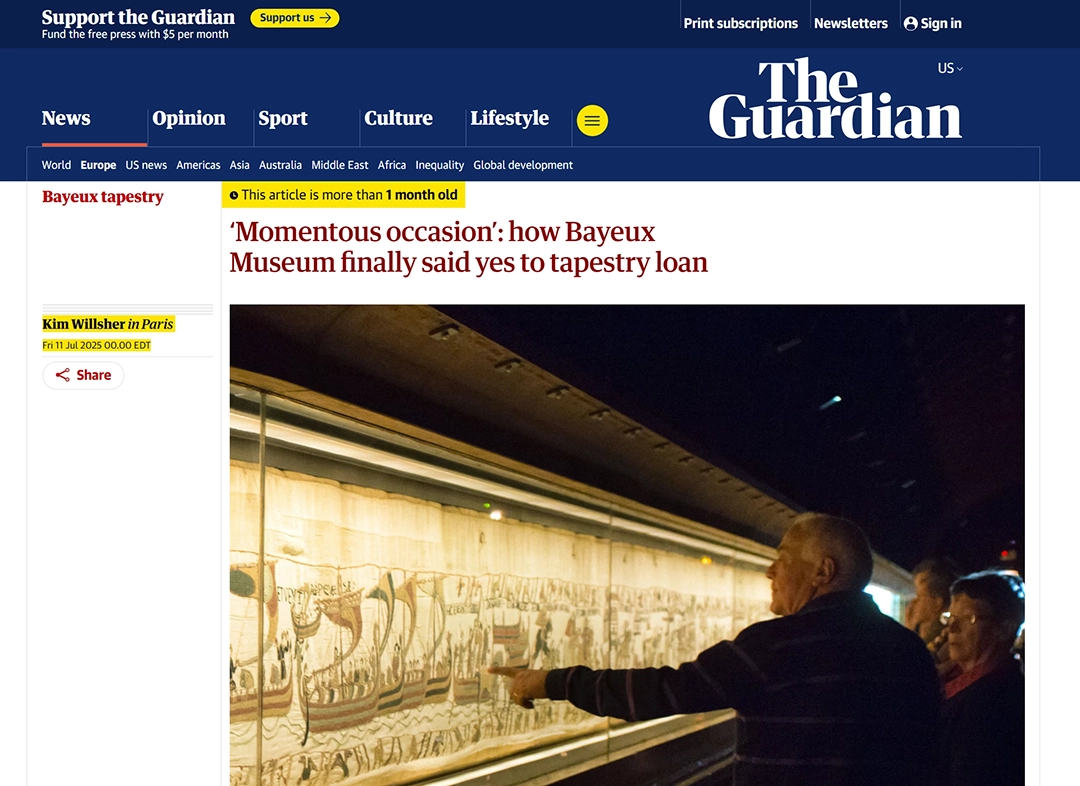
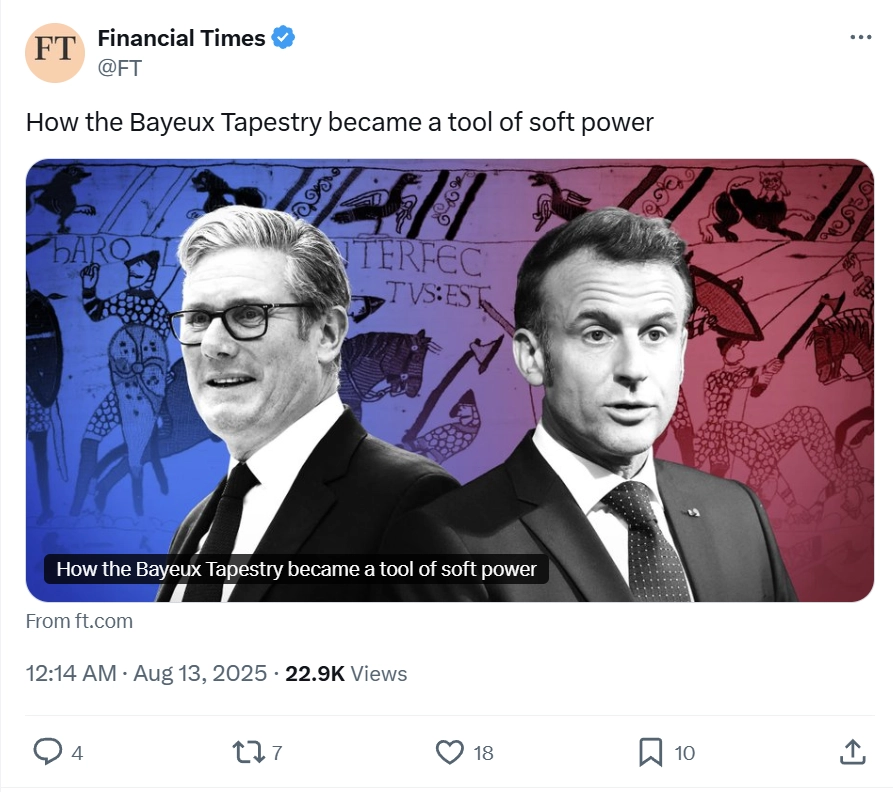





Comments powered by Talkyard.